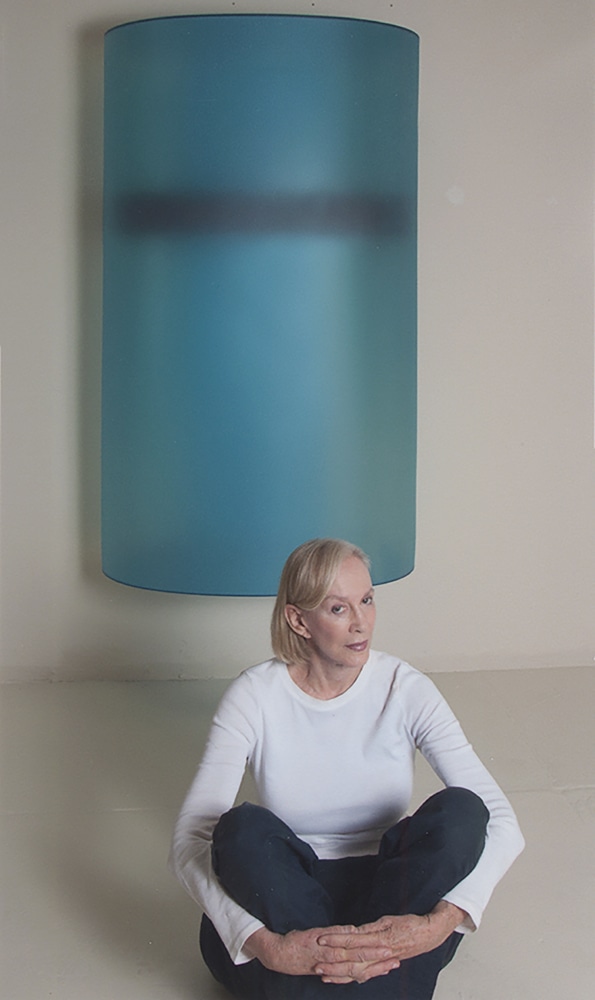
Lehmann Maupin is pleased to announce representation of Helen Pashgian. The Los Angeles-based artist is a pioneering figure in California’s Light and Space movement of the 1960s and ’70s. The gallery will mount its first major Pashgian exhibition in spring 2020, the artist’s first in New York in nearly 50 years. Lehmann Maupin will also debut new work in May 2019 at Frieze New York.
David Maupin commented from Frieze Los Angeles:
I cannot express how much it means to have Helen join the gallery. My roots in Los Angeles have kept me tied to this generation of artists, who are among my earliest and most lasting influences in how I look at art. Helen’s visionary work has long been evident to me, and we’re honored to be bringing her work to the forefront as her global representation.
Over the course of her career, Pashgian has produced a significant body of work comprised of luminous sculptures and wall works—vibrantly colored columns, discs, and spheres. Having long experimented with sophisticated applications of industrial epoxies, plastics, and resins, Pashgian is known for her ability to create semi-transparent surfaces that appear to filter and contain light. She is insistent that genuine understanding of her work is achieved only through physical experience of it. For her major installation, Helen Pashgian: Light Invisible, at the Los Angeles County Museum of Art (LACMA) in 2014, the artist installed 12 columns, like hours of a clock, each column producing a mesmerizing cycle from light to dark, evocative of the role light plays in our understanding of time.
Matthew Simms, professor, School of Art, California State University, Long Beach, who is currently working on a monograph about Helen Pashgian, states:
Helen Pashgian is one of the greatest women American artists of the postwar period. She rose to fame in the 1960s as a pioneer of California light and space art. Lustrous and elusive, Pashgian’s resin sculptures harness light to create dynamic interplays between interior volumes and exterior surfaces, which modulate subtly as the viewer moves around them. In her lambent sculptures and dark, mysterious paintings, Pashgian reveals that light—pulsating and rippling, or gleaming and sparkling—is both animated and alive.
Pashgian traces her interest in light as both subject and substance back to her early childhood, when she recalls playing amid tide pools and becoming fascinated by the refracted natural light. She sees the world as a space of constant transformation, in which genuine understanding is achieved only through one’s own physical experience and individual perspective. For Pashgian, light is not simply a metaphor, symbol, or allegory; light itself is both the medium and the message.
About the artist
Helen Pashgian (b. 1934, Pasadena, CA; lives and works in Pasadena, CA) received her BA from Pomona College, Claremont, CA, in 1956 and MA from Boston University, Boston, in 1958, and also attended Columbia University, New York, 1956-57. Solo exhibitions of her work have been organized at Los Angeles County Museum of Art, Los Angeles (2014); Pomona College Museum of Art, Claremont, CA (2010); and Palm Springs Art Museum, Palm Springs, CA (2007). Select group exhibitions featuring her work include Pacific Standard Time: Crosscurrents in L.A. Painting and Sculpture, 1950-1970, J. Paul Getty Museum, Los Angeles (2011), traveled to Museum of Contemporary Art San Diego (2011) and Martin Gropius Bau, Berlin, Germany (2012); Translucence: Southern California Art From the 1960s and 1970s, Norton Simon Museum, Pasadena, CA (2006); The Senses: Selections from the Permanent Collection, Pomona College Museum of Art, Claremont, CA (2006); and Inaugural Exhibition, Pasadena Museum of California Art, Pasadena, CA (2002). Her work can be found in numerous public and private collections internationally, including Palm Springs Art Museum, Palm Springs, CA; Portland Art Museum, Portland, OR; Santa Barbara Museum of Art, Santa Barbara, CA; Los Angeles County Museum of Art, Los Angeles; and Museum of Contemporary Art San Diego.
Artist portrait: Photo by Caren Levin
